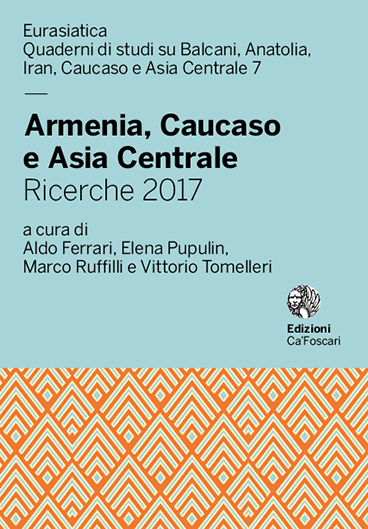Series |
Eurasian Studies
Edited book | Armenia, Caucasus and Central Asia
Chapter | La prima urbanizzazione in Turkmenistan: coesistenza tra nomadi e sedentari nel delta interno del fiume Murghab
La prima urbanizzazione in Turkmenistan: coesistenza tra nomadi e sedentari nel delta interno del fiume Murghab
Risultati preliminari delle indagini archeologiche ed etnografiche presso il sito di Togolok 1
Abstract
Modern Turkmenistan is mainly constituted by a desert landscape, yet despite its harsh climate, cultures have been able to construct networks of water channels since the Bronze Age. This has resulted in a man-made landscape that integrates towns and villages. Extensive surveys and recent archaeological excavations have highlighted that between 2400 and 2100 BC (Namazga V period), the region of the Murghab alluvial fan was characterised by the development of complex urban societies. However, starting from the Late Bronze Age, a new group of mobile pastoralists appeared in the Murghab region and settled along the edges of the sedentary sites. Although their presence is well-attested both by survey and excavation data, their degree of interaction with the sedentary farmers is still debated. In modern Turkmenistan, semi-mobile shepherds continue to drive their cattle across the Murghab, using mobile camps for different months. This paper presents the preliminary results of the excavation of the sedentary site of Togolok 1, as well as the first ethnographic study of the mobile communities of the Murghab region.
Submitted: March 22, 2017 | Accepted: July 27, 2017 | Published Feb. 19, 2018 | Language: it
Keywords Pastoralism • Archaeology • Ethnoarchaeology • Murghab • Central Asia • Nomadism • Turkmenistan
Copyright © 2018 Roberto Arciero, Luca Forni. This is an open-access work distributed under the terms of the Creative Commons Attribution License (CC BY). The use, distribution or reproduction is permitted, provided that the original author(s) and the copyright owner(s) are credited and that the original publication is cited, in accordance with accepted academic practice. The license allows for commercial use. No use, distribution or reproduction is permitted which does not comply with these terms.
Permalink http://doi.org/10.30687/978-88-6969-211-6/002





